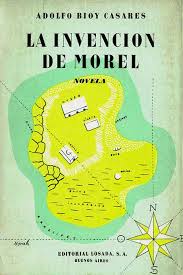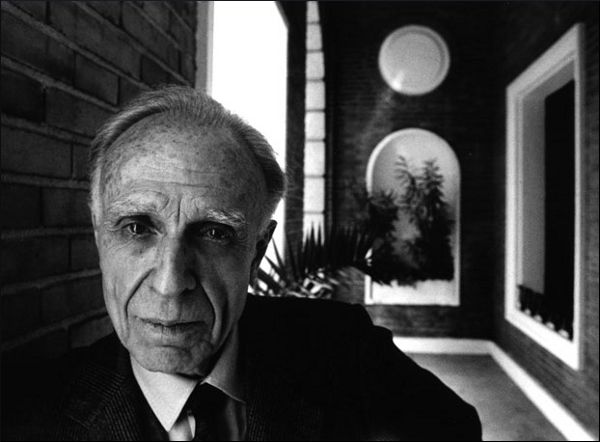
- The Invention of Morel
- Published by: Editorial Losada
- Level: Intermediate
- First Published in: 1940
A runaway ends up in a mysterious island, where a group of wealthy and strangely archaic vacationers engage in repetitive amusements, among them a gorgeous woman. Hiding from their gaze, the narrator tries to discover the secret behind his unwitting companions.

For international readers, Argentine literature is sometimes reduced to two writers: Jorge Luis Borges and Julio Cortázar. Which is unfortunate, because the country has produced many other important writers, including Adolfo Bioy Casares, Borges’ lifelong friend. Throughout the 20th century, Casares produced many famous novels and short stories, most of which are readily available at bargain prices in Buenos Aires bookstores. His breakthrough, without question, came in 1940 when he published La invención de Morel (The Invention of Morel), a fantastic adventure yarn set on a secluded Polynesian island. Although brief – my version is only 55 pages long – it’s dense, complex, and hugely entertaining.
"By the concluding pages readers will be asking themselves questions about eternity, the nature of reality, artistic representation, and so on and so forth."
The main character is a Venezuelan fugitive who, for some vague political reason, is seeking a place to hide. In Calcutta, an Italian rug salesman tells him that, for absolute secrecy, “there is only one place in the world, but it’s not one to live in. It’s an island.” He adds that it has been overrun by a mysterious disease and that anyone who has approached it has died. But the fugitive is so desperate that he travels there anyways, and what he finds is not a disease but rather complete solitude. There are buildings from an earlier era – a house, a pool, a museum – yet they’re all empty. That is, until a group of tourists unexpectedly appears in the island and decides to occupy it during their summer vacation. Terrified of being found out, the Venezuelan fugitive hides from view and secretly spies on his new neighbors, slowly falling in love with one of them, the French-speaking Faustine. The rest of the novel chronicles the narrator’s quest to discover who the tourists are, how he might reveal himself to them, and what he can do to earn Faustine’s love. Alas, he’s not the only man apparently vying for her affections: there is also a scientist, who arrived with the vacationers, named Morel.

Although this synopsis seems to set up a melodramatic love triangle, the novel turns into something else entirely near the end. I won’t reveal anything here, but the narrative eventually delves into surprisingly philosophical territory, and by the concluding pages readers will be asking themselves questions about eternity, the nature of reality, artistic representation, and so on and so forth. It’s no wonder that the American TV series Lost, which led puzzled viewers through six seasons of bewildering plot twists, actually includes several references to The Invention of Morel. What makes Casares’ novel so extraordinary, however, is that once the secrets are revealed, the story becomes even stranger and more mysterious.
"Once the secrets are revealed, the story becomes even stranger and more mysterious."
Ruth Simms’ translation is the most common English-language version of the book. Her prose is fluid, reads very well, and manages to make readers forget that the original was ever in Spanish. Unfortunately, Simms makes some very odd omissions in her text, and although no translation can possibly be literal, there is no reason why entire sentences should go missing. Other passages have their meaning changed. An early sentence about the tourists reads: “Están vestidos con trajes iguales a los que se llevaban hace pocos años.” I would translate that as: “They’re dressed in clothes like those worn a few years ago.” Simms, however, writes that “their clothes are from another era” and that this makes the tourists “eccentrics,” when the original says they’re frivolous. One can be frivolous without being eccentric, and the clothes are not from “another era,” which suggests too long a time span. As is later made clear, it’s important that the clothes be “from a few years ago,” that is, dated but still relatively recent. Nevertheless, Simms’ translation is easy to find and, as has already been mentioned, a pleasure to read. But the original Spanish is obviously preferable.

